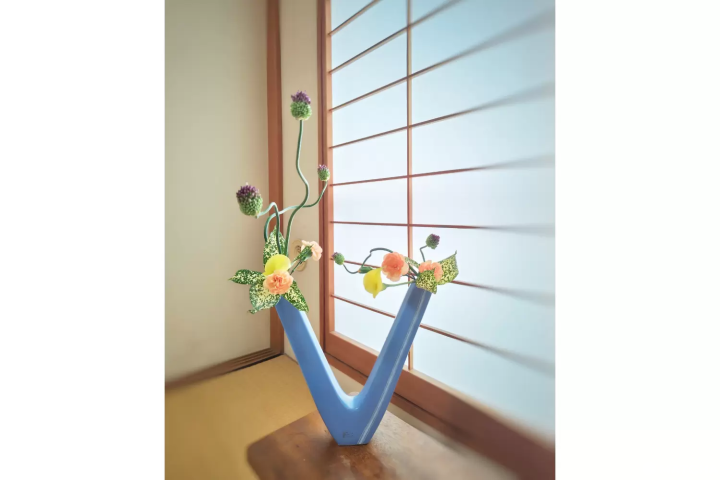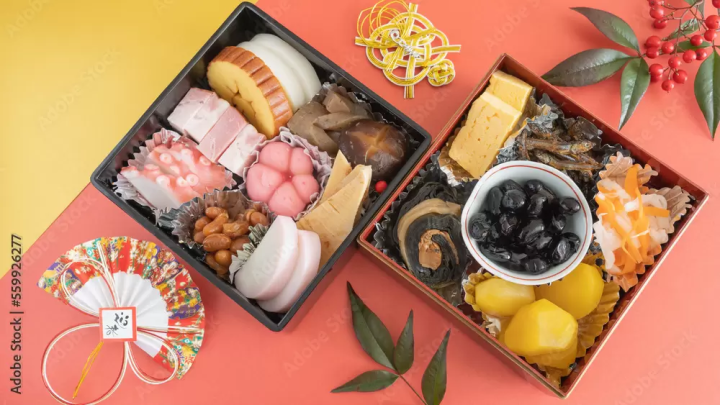The Origins of Ikebana Floral Art, Part 2: Modern Times

In the second part of our brief overview of ikebana's history, we highlight key turning points from early modern and contemporary periods. The 20th century saw the emergence of new styles of ikebana, the establishment of new schools, and the expansion of ikebana beyond Japan's borders.
The previous installment explored the early history of ikebana and its gradual establishment as an art form.
This time, we will discuss several key turning points that influenced the development of ikebana in modern times.
Ikebana in Modern Times
1. Edo Period: Ikebana Spreads to the Masses
2. Meiji Period: The Encounter with Exotic Flowers
3. Ikebana in the 20th Century
Today's Ikebana
Edo Period: Ikebana Spreads to the Masses
The Tokugawa shogunate established in 1603 marked the end of decades of civil war, allowing samurai and merchants to flourish and engage in cultural pursuits. As a result, ikebana quickly gained popularity among the masses as a means to cultivate one’s mind and embrace the aesthetics cherished by high-ranking samurai and nobility.
During the Edo period (1603-1868), the rikka-style ikebana, which originated in the 16th century, became increasingly elaborate. It became common for ikebana masters to write treatises on the principles of creating a truly beautiful rikka arrangement.
Rikka was considered a "miniature landscape," where tall branches represented mountain peaks, and horizontal branches symbolized rivers. Creating an exquisite rikka arrangement required immense skill and artistry.
Towards the late Edo period, a simpler style of flower arrangement emerged: shoka. Unlike rikka, which often comprised seven or nine components and was very intricate, shoka arrangements typically consist of just three elements.
This new style made ikebana more accessible than ever before.
Meiji Period: The Encounter with Exotic Flowers
The Meiji period (1868-1912), marked by the restoration of the imperial government as the de facto authority in Japan, brought about significant changes as the country began to engage more with the outside world.
For ikebana, this era presented the challenge of incorporating new flowers and plants that traditional aesthetics did not encompass. One can easily imagine practitioners of Meiji-period ikebana attempting to use roses in rikka or shoka arrangements and wondering why the results were not as pleasing as those achieved with native plants.
This encounter with foreign flowers spurred the need for innovations within the art of ikebana.
The Establishment of the Ohara School
The Ohara School was founded by Ohara Unshin (1861-1916), a ceramicist and sculptor based in Osaka (*2). As a practitioner of ikebana, he recognized the limitations of traditional styles when it came to incorporating Western flowers.
To address this, he designed low, flat ceramic vessels that complemented the aesthetics of Western and exotic blooms. This innovation led to the creation of the moribana style of ikebana, which retains the three basic components of shoka while allowing for greater freedom in the placement of flowers.
Moribana introduced a new method for achieving a harmonious balance between the flowers and the arrangement's spatial dynamics. As an artist, Unshin had the vision to underpin this approach with a philosophy that diverged from traditional ikebana principles.
As a result, the Ohara School gained rapid popularity, attracting many who were eager to embrace the changes brought about by Japan's modernization.
Ikebana in the 20th Century
During the Meiji period, cultural influences from abroad began to reshape Japan. However, by the 20th century, Japanese culture, including ikebana, gained recognition globally.
Ikebana masters began conducting workshops outside Japan, leading to the emergence of ikebana practitioners in other countries.
Simultaneously, changes in Japanese homes and interior design created a demand for new styles of ikebana that would complement modern living spaces.
This evolution prompted not only innovative developments in ikebana practices but also a reevaluation of the core values of the art form.
The Establishment of the Sogetsu School
Teshigawara Sofu (1900 - 1979) was born and raised as the eldest son of an ikebana master, but he became disillusioned with conventional styles of ikebana. In 1927, he founded the Sogetsu School, which emphasizes individuality and the creative use of materials and space over rigid adherence to traditional forms. (*3)
After World War II, Teshigawara actively promoted ikebana as an art form through exhibitions and demonstrations abroad. A multilateral artist, he was also engaged in calligraphy, painting, and sculpture, which is why Sogetsu flower arrangements often cross the boundaries between arts.
Alongside Ikenobo, Sogetsu and Ohara are regarded as the three major schools of ikebana.
In addition to these, many other schools exist. Ikebana exhibitions organized by cities and local governments frequently showcase representative works from all the active local schools. These events provide visitors with the opportunity to view various styles up close and compare their distinct features.
New Styles of Ikebana in the Ikenobo School
After the war, the Ikenobo School expanded its international presence, establishing an office in San Francisco in 1968.
In the 1960s, Jiyuka, the freestyle ikebana of the Ikenobo School, was introduced in response to the need for arrangements suited to modern interiors. (*4)
While the concept of arranging flowers in vessels of various shapes had emerged with the moribana style, Ikenobo advanced this idea by incorporating geometrical vessels into their arrangements.
In freestyle ikebana, the vessel itself becomes an integral part of the composition, and the flowers must harmonize with the shape and color of the vessel being used. This means that the choice of flowers is influenced by the characteristics of the vessel at hand.
There are no strict rules regarding form or proportions in freestyle ikebana. The guiding principle is that the arrangement should enhance the natural beauty of the flowers, celebrating their unique features.

Left: Shinputai shoka. Right: Shinputai rikka
In 1977, shinputai shoka (new-style shoka) was introduced, followed by shinputai rikka (new-style rikka) in 1999, both by headmaster Ikenobo Sen'ei. These contemporary interpretations of traditional ikebana styles prioritize expressiveness over strict adherence to form.
In shinputai shoka, the natural shapes of the flowers, the subtle harmony created by combining two elements, and the dynamic or depth introduced by a third element take center stage.
In traditional shoka, flowers carry their own background stories, which set the tone for the entire arrangement. But in shinputai shoka, the story emerges during the creation of the arrangement itself, making the cultural significance of each flower less relevant.
This shift allowed for the incorporation of Western flowers into both shoka and rikka arrangements.
Conclusion
We hope that this brief introduction to the history of ikebana has provided insights into how this art form has evolved and adapted over time.
While ikebana is deeply rooted in traditional Japanese aesthetics, it continues to thrive today by embracing new styles that align with modern lifestyles, all while preserving its essential core values.
Today's Ikebana

Today's ikebana features a jiyuka (freestyle arrangement) displayed in a V-shaped vessel. The curly lines of the allium introduce a sense of dynamism, while the calla lilies and carnations add vibrant color.
The shape of the vessel encourages an asymmetrical composition, allowing the allium stems to remain tall and highlighting their graceful curves.
References
1. History of Ikebana Ikenobo, by Ikenobo Masashi, Nihonkadosha, 2016.
2. About the Ohara School (retrieved on Nov. 8, 2024)
3. History of the Sogetsu School (retrieved on Nov. 8, 2024)
4. The Birth of Freestyle Ikebana and the Establishments of the Shinputai Style (retrieved on Nov. 8, 2024)
Read also
Main image: Shinputai rikka by Prof. Ono Kikka, the author's ikebana sensei.
Ramona, English content editor at MATCHA since 2016, has been practicing ikebana flower arrangement (Ikenobo School) and tea ceremony (Omote Senke) since 2012. She arrived in Japan in 2012 as a graduate student with a focus on Japanese literature and performing arts. As a travel editor and writer, Ramona has visited and documented 40 of Japan's prefectures with a focus on art, history, traditional Japanese crafts, and performing arts.
































